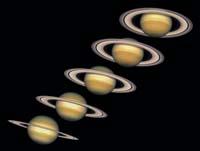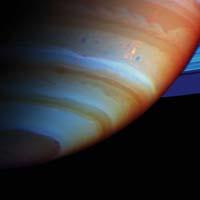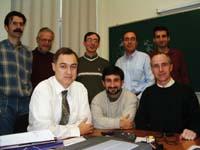By the atmosphere of Saturn

But a numerical simulation can also be performed. They use several numerical codes. These codes reproduce the entry of photons into the atmosphere and their propagation in different directions. Some photons are absorbed and others are forwarded to space, that is, they are reflected by the atmosphere.
The UPV research team has been developing these numerical codes for several years. In fact, depending on the light reflected by the atmosphere, the particles behind this reflection can be deduced. That is, analyzing reflected light can determine the number of cloud layers, their extension, their optical characteristics, etc. So they have studied the clouds of Saturn and its development for ten years. It is a relatively long term.
Changing winds
Once the structure of the atmosphere has been analyzed, the height at which the winds of the giant planet had been measured previously has been studied. This work has been done by researchers from the same group. This is essential if you want to understand the meteorology of the planet, as it provides a three-dimensional view of the atmosphere.
This study compared the images obtained by the Hubble Telescope with those previously taken by the Voyager spacecraft. The Planetary Sciences team observed in 2003 a huge change of winds in the equator in Saturn's atmosphere. No one expected it.

In the 1980s, the Voyager spacecraft measured winds of 1,700 km/h of intensity in the equator of Saturn. In 2003 there was a decline of 40% of this value, as if the winds were slowed or braked sharply. In 2004, when the Cassini space probe reached Saturn, they realized that at some wavelengths the winds were slower and at others faster. They then advanced the hypothesis that the winds were slowing with the height. That is, the higher the wind, the slower it is and vice versa. This is not a new discovery, as winds generally change in height in the atmosphere. However, the UPV research team has shown that this hypothesis was really true, based on height and wind measurements.
In addition, they observed an undoubted change regarding the data measured by the Voyager ship. The reason may be: In 1990 there was a terrible storm in the equator of Saturn, greater than the Earth itself. This phenomenon occurs every thirty years on Saturn and disturbs much of the planet. The impact of such phenomena on Saturn's atmosphere is currently being investigated, among other topics.

Buletina
Bidali zure helbide elektronikoa eta jaso asteroko buletina zure sarrera-ontzian











